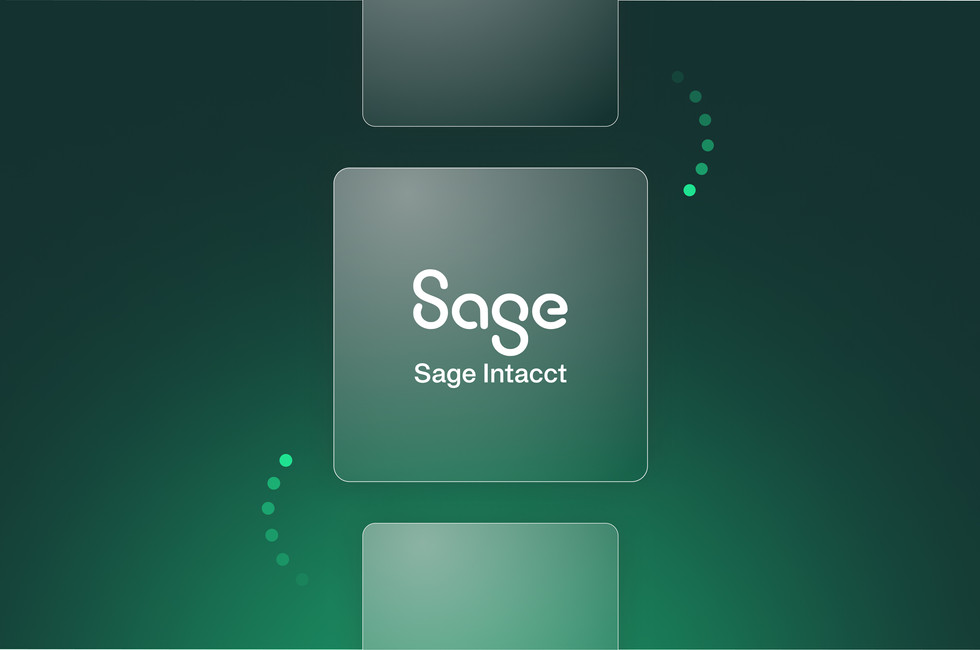
Unlocking strategic decisions: How to scale with the right ERP and accounting integrations



Managing global spend, reconciliations, and approvals across multiple accounts payable and expense systems and your ERP? When you connect your ERP with your expense management tool, you get a single source of truth, real-time sync, and clarity across every department and transaction — no more hassle, just smarter, faster decisions. The question isn't whether you should directly integrate your ERP; it's how and with what tools.
By submitting this form, you agree to receive emails about our products and services per our Privacy Policy.
Are your expense tools too basic to break down and categorise spend properly? While your ERP is too clunky to manage on-the-go spending via its expense offering? And what about how these systems talk to one another? As when they don't, it can quickly lead to mistakes, disconnected data, and limited visibility for informed decision-making.
You need a setup where:
- Corporate card spend auto-posts to the right GL accounts
- Invoices are coded, approved, and pushed to your ERP without delays
- FX, tax codes, and entity structures are respected
- All of it syncs accurately, continuously, and securely
This is where native / direct integrations between spend management solutions and ERPs shine.
Native ERP integrations give you a single, accurate data source, eliminating discrepancies caused by fragmented or delayed data. They can also speed up month-end closing by removing manual bottlenecks and help you stay compliant with SOX standards, reducing the risk of costly compliance issues.
Meet the agents: Automate up to 90% of your manual processes with AI & automation

Your ERP + spend management: A real-time operating system for modern finance teams
Whether you're using Sage Intacct to scale operations, NetSuite to manage global complexity, or Xero and QuickBooks as you grow, at Payhawk, our native integrations are built to work with you.
Sage Intacct
For fast-growing companies looking for something more advanced than entry-level accounting software, our Sage Intacct integration bridges the gap. By syncing master data like suppliers, tax codes, and GL accounts directly into the solution, teams can automate reconciliations and maintain real-time accuracy. Plus, custom fields built using Sage's chart of accounts allow spenders to code expenses correctly from the start, accelerating month-end close and boosting data integrity.
NetSuite
Our NetSuite integration is built for scale. Whether you operate across multiple entities, currencies, or departments, the integration handles it all, syncing the chart of accounts, subsidiaries, classifications, and vendor data. Approved expenses and invoices are posted in seconds, complete with the right coding and documentation. It's a favourite among finance teams managing complex intercompany setups or heavy project-based spend.
Microsoft Dynamics 365 Finance
Microsoft Dynamics 365 Finance is known for its complex dimension-based financial reporting. However, this complexity is quickly made more user-friendly for finance teams with our integration. By providing real-time allocation across cost centres, departments, and projects, we help you automate entries, reduce manual errors, and accelerate month-end closes. Plus, it provides seamless mapping between dimension-based categories in our solution and Microsoft Dynamics, ensuring a clean and consistent data flow.
Xero
Our integration with Xero is ideal for scaling businesses that need better control without giving up agility. Finance teams can export categorised expenses and invoices using structured templates tailored to their Xero setup. Combined with real-time spend tracking and receipt capture, it helps eliminate month-end surprises while keeping the process lightweight and flexible.
QuickBooks
At Payhawk, we provide clarity and consistency to QuickBooks users. Whether you're managing reimbursables, corporate card spend, or AP, our export templates are built to match your chart of accounts. You get cleaner records, better categorisation, and faster reconciliation — so finance can stay focused on strategy, not spreadsheets.
Multi-entity logic made simple
Whether you're managing five entities or fifty, our integrations support multi-entity workflows with tailored rules per country or subsidiary. That includes four very important things:
- Tax code mapping (e.g. VAT vs GST)
- Currency and FX support
- Custom field syncing from ERP to expense and invoice workflows
- Entity-specific approval chains, budgets, and reporting views
By automating the handling of complex tax regulations, currencies, and more, we help you scale with ease without worrying about manual errors or discrepancies across entities.
Finance teams using NetSuite, Sage Intacct, et al. benefit from the same "richness." One UK-based SaaS customer scaled from two to 12 entities in 18 months without hiring additional finance headcount, thanks to automated workflows between our solution and Intacct.
Data you can trust. Reporting you can act on.
One of the most powerful outcomes of real-time ERP integration is the integrity of your financial data. With Payhawk, the moment a transaction is approved, it’s formatted correctly and sent to your ERP with the right metadata. That includes:
- GL codes
- Department and project tags
- Supplier records
- Receipt attachments
- Reimbursement statuses
- Payment references
No more reconciling after the fact. No more wondering whether the spreadsheet reflects reality.
Plus, get built-in flexibility for Xero, QuickBooks, and beyond: Not every business runs NetSuite or Dynamics. That’s why we also support structured exports for accounting software platforms like Xero, QuickBooks, and DATEV. These aren’t basic CSV dumps — they’re templated, pre-mapped, and customisable to your accounting structure.
It’s the same result: clean, reliable data in the system that matters most.
Case study 1: How State of Play uses Payhawk + NetSuite to track DJs, drinks (and every dollar in between)
State of Play Hospitality, the experiential leisure group behind brands like Bounce, Hijingo, and Flight Club, operates multiple venues across the UK and the US. For a finance team managing six legal entities — and growing — visibility into spend at every venue isn't just helpful. It's non-negotiable.
Before Payhawk, State of Play relied on a tangle of tools: bank-issued credit cards, manual expense workflows, and a disconnected AP system (Bill.com) that didn't play nicely with NetSuite. "We were running a pretty manual setup," explains David Watson, Group Financial Controller. "It didn't combine cards and AP fulfilment, and it certainly didn't integrate cleanly with NetSuite."
That all changed when they switched to Payhawk. David Watson, Group Financial Controller, State of Play, describes:
> Taking corporate credit card transactions away from the traditional banks to a product that directly integrates with NetSuite was a game-changer.
Now, venue managers across the group can capture spend at source — whether via card or invoice — and our real-time integration pipes it all directly into NetSuite, complete with correct GL codes, classes, and supporting documentation.
- Multi-entity management with forensic clarity
With our multi-entity dashboard, State of Play can toggle between subsidiaries and get instant visibility over spend, down to the transaction, merchant, and justification level. This isn't just reporting; it's decision-making infrastructure.
"The international aspect of Payhawk is super important to us," explains David. "Being able to flick between dashboards and find out when and where a transaction happened instantly… that's what really sold it to us."
And because we operate platform-based pricing (not transaction-based), scaling doesn't trigger budget anxiety every time a venue grows.
- Custom fields, DJs, and variance analysis
The magic lies in the details. Andrew Jacobi, VP of US Finance, explains how we help them break down spend by venue, category, and budget line item, all before it hits NetSuite:
We rely on the customisable class settings within Payhawk to distinguish between venues and analyse performance. Whether it's assigning spend to the right GL code or identifying overspending, it's incredibly helpful.
In practice, that means identifying when one venue's entertainment budget (like DJs) starts drifting off course. With us, every invoice is tracked, tagged, and evaluated, so variance analysis becomes proactive, not reactive.
"At the end of the period, we ask: were we able to forecast our spend properly? If DJs at one location cost $7,000 instead of the planned $5,000?" says Andrew. "We can trace exactly what happened and decide whether we need to adjust our budget."
- Faster supplier onboarding, better spend control
In hospitality, waiting three days for a card approval can derail marketing launches, vendor relationships, or procurement deadlines. But State of Play have used our solution to flip the script.
"We can instantly issue a card to a teammate for a specific vendor, with a precise limit," Andrew explains. "That lets our operators stay nimble… while finance stays in control."
With AI-powered invoice capture via OCR tech and full sync into NetSuite, reconciliation is no longer a month-end scramble. It's a live, ongoing, no-headaches experience.
- Achieving clarity: the Payhawk effect
Today, the State of Play finance team spends less time wrangling data and more time improving margins, optimising budgets, and scaling confidently. By replacing disconnected tools with a single global platform, they've unlocked real-time financial control across every venue, currency, and category.
Andrew explains:
Payhawk allows us to spot overspending up and down our P&L very quickly. It's totally changed how we manage spending at scale.
Learn more about State of Play's Payhawk experience in the video below.
Case study 2: How Wellpointe Inc. uses Payhawk + NetSuite to bring order to M&A growth
Wellpointe Inc., a California-based healthcare company specialising in boutique assisted living, is no stranger to complexity. Operating across five subsidiaries and growing fast via mergers and acquisitions (M&A), the company needed a smarter way to manage financial operations across its multi-entity structure, without drowning in manual processes. Their legacy credit card setup and disconnected AP workflows couldn’t keep up. The team needed something purpose-built for multi-entity operations, something that could scale with them and integrate directly with NetSuite.
- Eliminating friction with real-time data and continuous close
Wellpointe moved over to us in late 2023 with clear success criteria: consolidated expense management across five entities, better visibility, and a seamless NetSuite integration that supported continuous financial closing. That last point was key — not just for compliance or reporting, but for making faster, smarter decisions.
CEO and founder George Kutnerian says:
With Payhawk, we use real-time data to benchmark against our M&A turnaround goals and pivot early if needed. We’re not waiting until month nine to realise we’ve veered off course.
By issuing entity-specific corporate cards through our solution and enabling custom expense categorisation at the point of purchase, Wellpointe streamlined data capture and improved accuracy across the board. They no longer worry about reconciliation lags, lost receipts, or misallocated spend.
- Empowering spenders, enhancing accountability
One of Wellpointe's biggest culture shifts came from our custom expense coding, which empowers employees to categorise their own spending using the live chart of accounts pulled from NetSuite.
Together, we’ve freed up the accounting department from non-value-adding work. Wellpointe’s spenders can now code transactions correctly, right at the point of purchase. Saving time and adding instant clarity.
And the approach doesn’t just reduce finance workload, it reinforces a strong culture of ownership and spend transparency.
- FP&A that goes beyond bookkeeping
For George and the team, the real power lies in what happens after the transaction. With real-time visibility and granular categorisation, we help them transition from reactive accounting to proactive FP&A.
George says:
We’re multi-geography in the US, and food costs — one of our biggest expenses — can vary widely. With Payhawk, we can pinpoint the reason for a variance: Is it the local vendor? The purchasing process? Now we can ask the right questions and act fast.
This level of insight allows the team to benchmark spend across entities and adjust strategy without waiting for month-end reports. It’s agile, data-informed decision-making exactly what a growing, M&A-focused company needs.
- A NetSuite integration “like butter”
Wellpointe’s financial strategy depends on segmenting and consolidating performance across its subsidiaries. That requires a robust ERP like NetSuite and a frictionless integration.
“With Payhawk and the ERP integration, we have the data flow we need to support our capital partners and consolidated reporting,” describes George. “It’s so smooth — I’d say it’s like butter.”
The team now enjoys automatic syncing of spend data, complete with receipts, codes, and entity segmentation, into NetSuite. That means faster closings, fewer errors, and a stronger financial backbone as the company scales.
- Building for the future, one entity at a time
As Wellpointe grows, our solution (and integration) remains at the centre of its finance stack, empowering users, simplifying audits, and supporting informed decisions every step of the way.
George explains: “Thanks to Payhawk, we can now focus even more on our mission of providing exceptional care to our residents, knowing our financial operations are in good hands.”
Final word: Integrations that scale with you
You can’t build a strategic finance function on duct tape and disconnected tools. If you're looking to scale without adding complexity (or headcount), ERP integration isn’t optional. It’s the foundation.
At Payhawk, we help finance leaders automate operational tasks, enforce control frameworks, and gain the insights they need to lead. Our native ERP integrations don’t just connect systems; they empower your finance team to stay ahead. You get reliable, real-time data that drives efficiency, compliance, and strategic decision-making across the entire business.
Whether you’re running NetSuite, Intacct, Dynamics, or another ERP, the question should no longer be ‘how do we connect finance?’ It should be ‘when can I get started with Payhawk?’ Book a demo to learn more.
Trish Toovey works across the UK and US markets to craft content at Payhawk. Covering anything from ad copy to video scripting, Trish leans on a super varied background in copy and content creation for the finance, fashion, and travel industries.
Related Articles


Sage Intacct integrations with spend management: Worth it?

